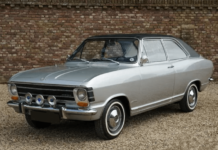[ad_1]
Here is an article that you will absolutely never see on any other normal ebike blog site. For the last year or so I have experimented extensively with charging ebike batteries with an inexpensive Variable Voltage Power Supply (also known as a lab power supply). This article is about how and why I have done it and why you should probably never ever do this.

Most ebike chargers charge batteries to 100%, there are a few exceptions like the Luna Advanced ebike chargers which allow you to charge to 80% or 90% and the Grin Cycle Satiator which allows you to charge to any voltage but they are the exceptions to the rule. All lithium chargers that I know of charge with a Continuous Voltage Variable Amperage style. This means that the power supply puts out a continuous amount of voltage and the battery sucks up whatever amps it can tolerate for the state of charge it is in. This creates a charging profile which charges at maximum amps up to about 75 percent and then slowly tapers off to zero. Typical ebike chargers have some built in protections like
- If there is no voltage detected they will not start charging (unlike almost all lead acid battery chargers)
- It will shutoff if there is a over-voltage condition on the battery
- It will shut off if there is a short
- If the polarity is reversed most lithium chargers will not charge
A lab power supply has none of these safety precautions which makes it extremely dangerous to use, especially if you are running with a BMS that does not have a high voltage cutoff or charging a battery without a BMS. If you hook up a lab power supply to a battery with the polarity reversed the battery and the lab charger will play tug of war and eventually one of the two will be destroyed, probably in a fiery display. Basically don’t do this.
I bought a variable voltage power supply because I bought a large 80lb LifePO4 battery from China that was all sorts of messed up from shipping and I decided to waste about a hundred hours of my time trying to fix it. I needed to charge individual cell groupings at odd voltages and so I just broke down and bought this 5 Amp Lab power supply on Amazon for $79. There are other 10 Amp Lab power supplies that are a bit more expensive. After a while I decided to try to charge my ebike batteries with it and I was pleasantly surprised at how well it worked. Although you can use the alligator clips to connect to XT60 female connectors, this is not recommended. If you have XT60 male connectors on your battery you really should not use the alligator clips because if you accidentally touch the two contacts (very easy to do) then you will make lots of sparks and damage the connector. You can buy a spare set of probe wires for $10 and wire on a permanent XT60 or barrel connector (positive tip polarity) which is the safest thing to do. If you do this make sure to double check the voltages to make sure you don’t mess up and reverse the polarity before plugging in your battery.

With a variable voltage power supply you can charge an ebike battery to any voltage quickly and easily. Just set the target voltage you want on the power supply before hooking up the battery and then plug it into the charge port of your ebike battery. Want to charge to 80%? No problem. What to charge it to 50% for long term storage? No problem. The possibilities are endless. Make sure you know what the nominal voltage of your pack is and the maximum voltages to safely charge is before you hook up the power supply.
Now the downside, you don’t want to set the voltage of the power supply higher than the maximum charging voltage for the pack you are charging. Batteries charged to even 101% of maximum can be extremely volatile and can overheat or explode. NEVER rely on the High Voltage Cutoff(HVC) of your BMS to protect your battery. If you set the dial wrong or your cat bumps up the voltage by rubbing its body up against the dial while charging then you can have real problems on your hand. Never leave lithium batteries charging unattended, the safest place to charge Lithium batteries is outside your house or in a woodstove.
Just because you CAN do something doesn’t mean you SHOULD. I am recommending against using variable voltage power supplies to charge ebike batteries, but for people like me who spend their life tinkering with lithium packs (and know what they are doing) you totally can do it and it works pretty well in a pinch.
Ride On.
[ad_2]
Source link















